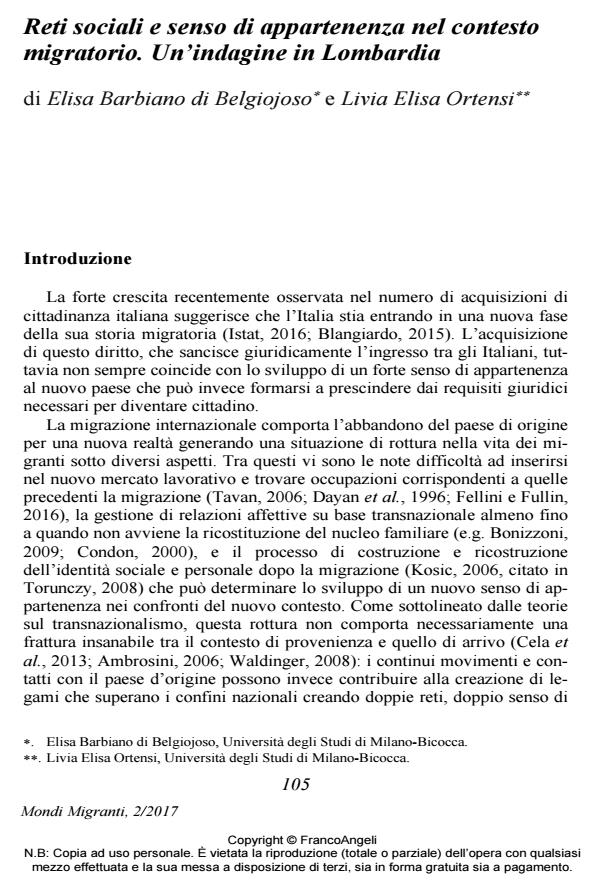Social networks and sense of belonging in emigration. The case of Lombardy
Journal title MONDI MIGRANTI
Author/s Elisa Barbiano di Belgiojoso, Livia Elisa Ortensi
Publishing Year 2017 Issue 2017/2
Language Italian Pages 20 P. 105-124 File size 202 KB
DOI 10.3280/MM2017-002006
DOI is like a bar code for intellectual property: to have more infomation
click here
Below, you can see the article first page
If you want to buy this article in PDF format, you can do it, following the instructions to buy download credits

FrancoAngeli is member of Publishers International Linking Association, Inc (PILA), a not-for-profit association which run the CrossRef service enabling links to and from online scholarly content.
The present study assess the role of networks of friends, family members and work colleagues in shaping the migrants’ sense of belonging to Italy. For this study we use data from the 2013 survey carried out by the Regional Observatory for Integration and Multietnicity of Lombardy (Orim) on a sample of 4.000 interviewees with a foreign background. Results show the crucial role of social networks, and particularly of bridging networks in shaping migrants’ sense of belonging. Migrants with a stronger sense of belonging to Italy have a substantial presence of Italian friends in their networks and fully approve social norms typical of the country of immigration.
Keywords: Belonging, social networks, bridging, bonding, migrants, Italy
Elisa Barbiano di Belgiojoso, Livia Elisa Ortensi, Reti sociali e senso di appartenenza nel contesto migratorio. Un’indagine in Lombardia in "MONDI MIGRANTI" 2/2017, pp 105-124, DOI: 10.3280/MM2017-002006